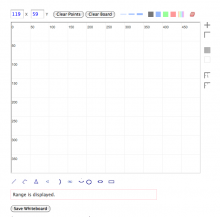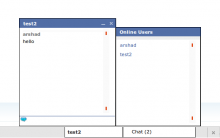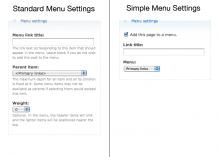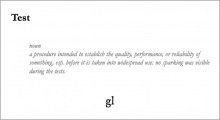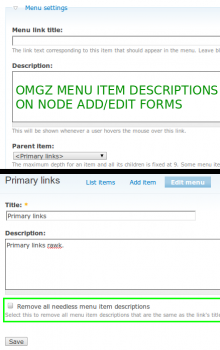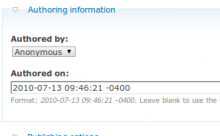Add functionality and customize your Drupal application with thousands of projects contributed by our amazing community.
A module is code that extends Drupal's by altering existing functionality or adding new features. You can use modules contributed by others or create your own. Learn more about creating and using Drupal modules.
Media: CNN is an Embedded Media Field provider for cnn.com
MTG Filter is aimed at Magic: The Gathering websites. The goal of this project is to allow authors to create content using card images to help illustrate the content.
This is a simple feature for Open Atrium that implements the greasemonkey script from Nodeone that adds notes from an external site right onto the projects here at Drupal.org.
"1 Flash Gallery" is an Image Gallery with an automatic slideshow functionality and a forceful control panel to supervise your image array with no requirement of programming proficiency.
Node CSS uses node fields to populate a CSS template file. CSS for all nodes can either be aggregated into a single file or generated per node. In both modes, the CSS files are added using drupal_add_css() so it complies with full Drupal aggregation and compression. If aggregation is turned on in Node CSS it is recommended to make the CSS node specific via a body node class because the same CSS file is loaded for multiple nodes. Many themes output a node specific class by default.
Full aggregation is recommended for performance (the same CSS file can be used across the entire site). Individual files is recommended for small sites and/or where you don't have access to a body node class.
body.page-node-<?php print $css_vars['nid']; ?>
Example applications
- Set an image uploaded into a node as a background image e.g. a body wallpaper or a flourish
- Set the background colour of a page element using jQuery Colorpicker
General usage
By default, fields according to the naming scheme field_css_ in enabled content types will automatically be passed to the template and hidden from the node display. Both the naming scheme and visibility can be changed.
A CCK content field which lets you add a Call of Duty: Black Ops map to your content types; displaying map name, id or image.
For views displaying a lot of content, loading & rendering the view can cause out of memory timeout errors.
This module utilises jQuery to transform autcomplete widgets in order to automatically pipe selected node reference values to a hidden field and strip the [nid:n] string from the display field.
Drupal 9
A Drupal 9 version is now available. Checkout the demo!
The idea behind this module is to create a clean version of the node form.
This is useful in the cases where we would like to use the node form
Balance Tracker Node Reference is add-on to Balance Tracker -module. This module adds the ability to refer a node in the transaction. This functionality is useful when for example user is paying for a product or a service which is identified by a node or receives money from interacting with a node. Note that this module does not do anything by itself! It only extends the functionality of the main module!
This simple module acts as a bridge to integrate the DrupalChat module in the Tray.
This module simplifies menu settings on node add pages.
Description
The module tracks recently viewed nodes for both anonymous and authenticated users.
It provides an API function for others to get a list of recently viewed items and also defines a configurable recently viewed items block. You might want to make use of the recently_viewed_views submodule which provides a customised default View to benefit the endless flexibility of Views.
Also if Ubercart module suite is enabled, there's another useful submodule named recently_viewed_products which adds an another default view for UC specific products with the same said functionality.
Disclaimer
This module is in an early development stage, It is not intended to be used in production.
Important notice
Since the module initiates sessions, it's incompatible with Varnish Cache.
In future releases there might be an option to work with cookies instead of sessions addressing this issue.
Recommended modules
Here is a list of recommended modules to be used with "Recently viewed views integration" and "Recently viewed products" submodules:
Wysiwyg Fields is an Inline field management system, a module that bridges the gap between Drupal fields and CKEditor, giving the power of Drupal's field system via the simple usability of a CKEditor dialog.
What that means is that Wysiwyg Fields allows for any Drupal field to be embedded directly into CKEditor and behave as a native CKEditor plugin, removing unnecessary clutter from your Drupal entity forms.
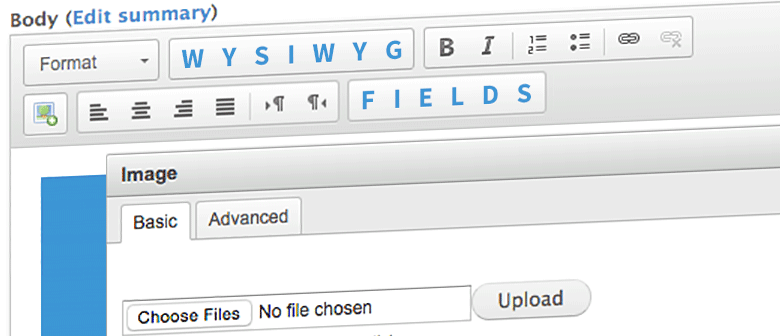
Create a block via a CCK widget!
Provides AsciiDoc filter integration for Drupal input formats.
This module adds a Webform component that collects user registration details and creates a new account.
Atrium Glossary allows each Open Atrium group to collaboratively create a glossary of terms and definitions.
Here's a brief description of Evernote from the source:
"Use Evernote to save your ideas, things you see, and things you like. Then find them all on any computer, phone or device you use. For free."
Evernote is a note-taking, idea-saving application that has been adopted by over 3 million people. It syncs up your notes with a remote server, so accessing your latest notes on multiple devices is automatic. When you upload images, Evernote will OCR them to make them searchable. You can embed files as well, though only PDFs, .txt and images with the free version. The premium service enables a few additional features such as embedding any kind of files and increasing the amount of bandwidth allotted to you per month.
The idea behind the Evernote module is twofold. The first goal is to leverage the Evernote API to make it a blogging platform. Because Evernote is a great way to gather ideas and information, the next logical step is to make sharable information accessible on the web. See here for more background. The result of bringing Evernote and Drupal together is a rapid blogging tool that will integrate into many people's workflow.
Here's what a typical workflow would be for setting up a feed:
Pages
 Support for Drupal 7 is ending on 5 January 2025—it’s time to migrate to Drupal 10! Learn about the many benefits of Drupal 10 and find migration tools in our resource center.
Support for Drupal 7 is ending on 5 January 2025—it’s time to migrate to Drupal 10! Learn about the many benefits of Drupal 10 and find migration tools in our resource center.